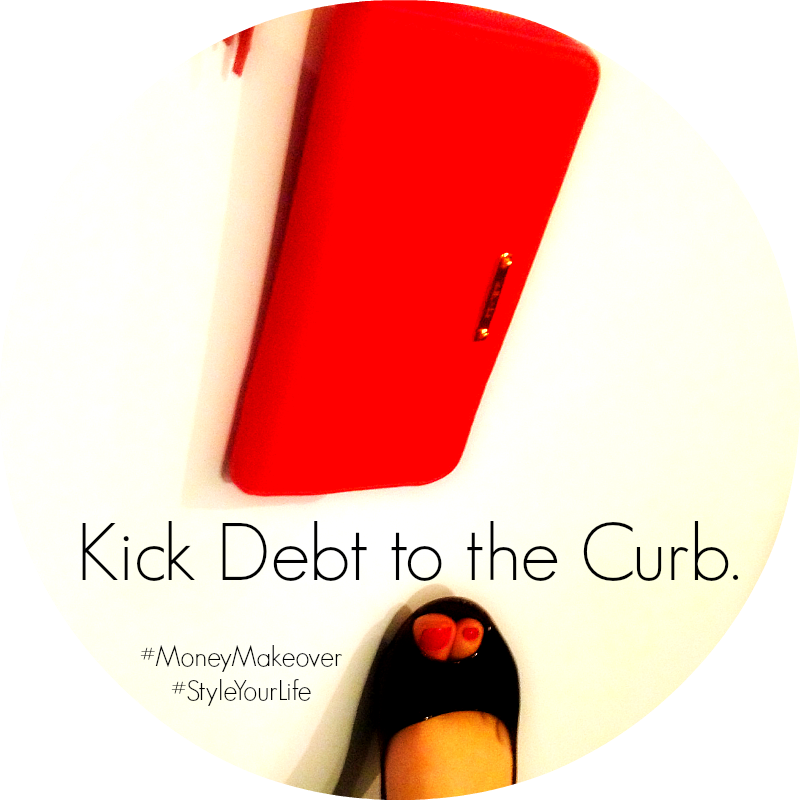Money Makeover Series: Kicking Debt to the Curb

It’s time for another Money Makeover Series check in! Today we’re going to take a look at the progress of Pamela, our Future Financial Leader. She’s made some incredible strides in her first month so let’s not waste any time. Here’s what Pamela’s been up to:
When Pamela began the series, she had one major goal and that was to optimize her financial situation. Then, for any women who aren’t taught about finances growing up, she wants to become an example of how to provide themselves with a strong financial future. She was already off to a great start by taking on a new day job to better her career and also maxing out her retirement savings. The kink in the chain: debt.
Exploring All Debt Payoff Avenues
One thing that many people don’t realize when trying to pay off debt is that there are a lot of things you can do to pay it off faster. In Pamela’s case, she’s carrying a few credit cards with smaller balances so the first thought we had was to consolidate debt. This would enable her to make one payment, instead of four, and possibly even lower her interest rate. Pamela also knew that she had a very good credit score so she wasn’t afraid of not being approved for a loan.
Another thing that many people don’t realize is that you don’t need to go to a “debt consolidation” company to consolidate your debt. In fact, most companies who claim to consolidate debt actually negotiate or settle debt – two things that can actually hurt your credit score for many years and possibly even cost you more money in the long run. Consolidating debt is a do it yourself kind of thing, and the most common methods are: 1) credit card balance transfers 2) peer-to-peer loans 3) home equity lines of credit or loans.
In Pamela’s case, she didn’t want to take on any new credit cards or add on to her mortgage, so the most logical solution was to look into peer-to-peer lending. This is a way to obtain a loan that pays off your debt but doesn’t allow you spend more like you could do on a credit card or line of credit. That means there’s an end date to your debt and no risk of accruing more debt on that particular loan. Additionally, the interest rate can go all the way down to the single digits, saving quite a bit compared to the average 20% or greater interest rate on an existing credit card.
Closely Evaluating Before Making a Decision
Pamela applied for peer-to-peer loans from The Lending Club and Prosper. At the end of the day, the interest rate she was approved for was lower than her credit card interest rates, but not as low as she would have liked. On top of that, they were offering a three year repayment term, and she thought she could kick her credit card debt to the curb much faster than that. So, although debt consolidation was an avenue worth exploring, it ended up not being the right choice for Pamela.
Earning Extra Income
Pamela decided that she would forgo debt consolidation and pay the debt off faster on her own. Shortly after starting the series, she picked up a side job as a bartender at a local pub near her apartment. By the time she and I checked in, she was already fully trained and earning a solid amount of extra money each week.
Now I have to take a moment to give Pamela some serious props here. It’s not easy to take on a second job or find ways to earn extra income when you’re already working full-time. And Pamela’s day job can be very high stress, but Pamela took this on without giving it a second thought. She wanted to see that credit card debt gone, and, with that ‘take no prisoners attitude,’ I know she can do it. She even found positive ways to look at it – working at a bar can be fun (albeit stressful), and her friends can visit her. Plus, the bar is only doors from her apartment, so it’s easy to fill in last minute for people and earn even more money unexpectedly.
Pamela’s Next Steps
With a new budget and a now reliable amount of extra money coming in every week, Pamela is 100% focused on paying off her credit card debt. She’s using the debt avalanche method, which means all of her extra money will go to the highest interest rate credit card while the rest get the minimum only. Once that’s paid off, she will take the amount she was paying on that card and add it to the minimum of the next highest interest rate account, and so on, until she’s credit card debt-free. With her revised budget including the extra income, she’s looking to beat the three year repayment plan by a whole year or more. Now that’s what I call some serious determination!

